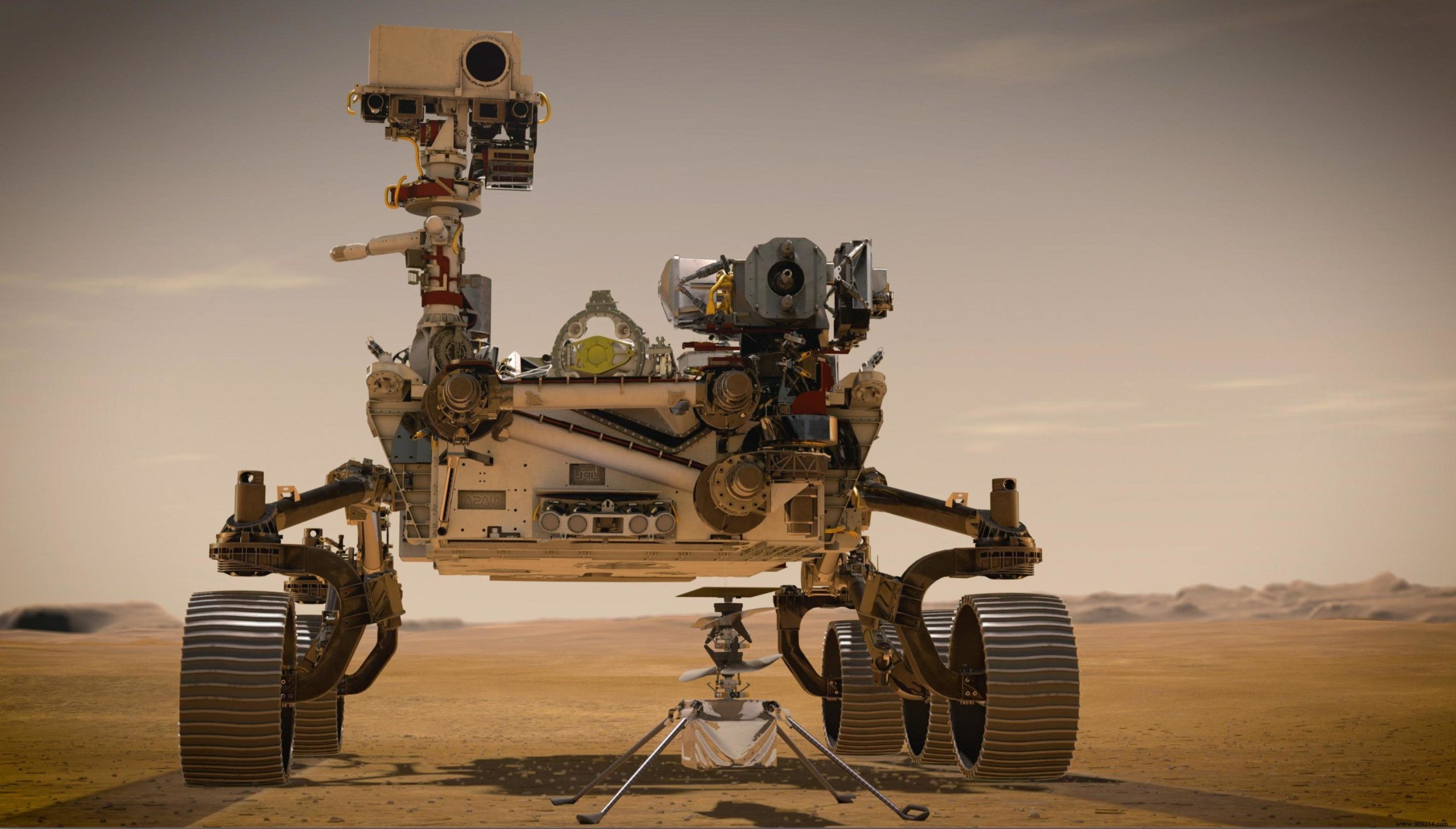NASA's Mars 2020 mission will be an opportunity for the American agency to test Ingenuity. If all goes as planned, it will be the first craft to fly over an alien world.
On February 18, NASA's long-awaited Mars 2020 mission is due to land. Its objective:to release the Perseverance rover on the surface of the red planet, in order to search for traces of past life. But the American agency also intends to take advantage of this mission by testing its new small rotorcraft, named Ingenuity.
This side mission is considered by NASA to be a low-risk technology demonstration. This small helicopter will indeed not make any study. His main objective will simply be to successfully fly . If successful, he will then be the first to do so over another planet. It will also pave the way for other flying machines developed by the American agency in the years to come.
“Our job will be to prove that autonomous, controlled flight can be performed in the Martian atmosphere extremely thin , says MiMi Aung of NASA's JPL. If we prove it's possible, then we may one day see other helicopters play larger roles in future explorations of the Red Planet .
These future rotorcraft could, for example, be used to transport or recover small payloads. They could also prove invaluable in quickly spotting safe crossing routes, or carrying out reconnaissance missions. Thanks to these machines, future astronauts could then estimate the potential of several exploration areas inaccessible to rovers .

Perseverance and its small helicopter, well wedged under its "belly", should land in Jezero Crater.
From the 60th Martian day (or sol), Perseverance will drop the composite graphite shield that is supposed to protect the helicopter during the landing phase. He will then head to a dedicated area. A kind of small Martian airfield. Approximately six days later, the teams will then order Perseverance to release Ingenuity.
The first step will be to disable the locking mechanism that holds the helicopter in place. Then a pyrotechnic cable-cutting device will be triggered, allowing the spring-loaded arm that holds the helicopter to begin to rotate it, so as to present it horizontally. Another pyrotechnic device will release its four legs, then Ingenuity will land on the surface.
About a week later, mission leaders will then give themselves thirty days to test its capabilities.
The helicopter will perform up to five flight tests. For the first, it will activate its blades at nearly 2,900 revolutions per minute (10 times that of a helicopter on Earth, due to the lack of atmosphere on Mars). Then, it will rise vertically to a maximum height of three meters. This first try should last about 30 seconds.
For the next four flights, which should last about 90 seconds, NASA will try to evaluate Ingenuity's performance over several hundred meters. Each time, the researchers will also have to ensure that the rover is placed at a safe distance (about fifty meters). Once these operations are completed, it will then be abandoned in place .